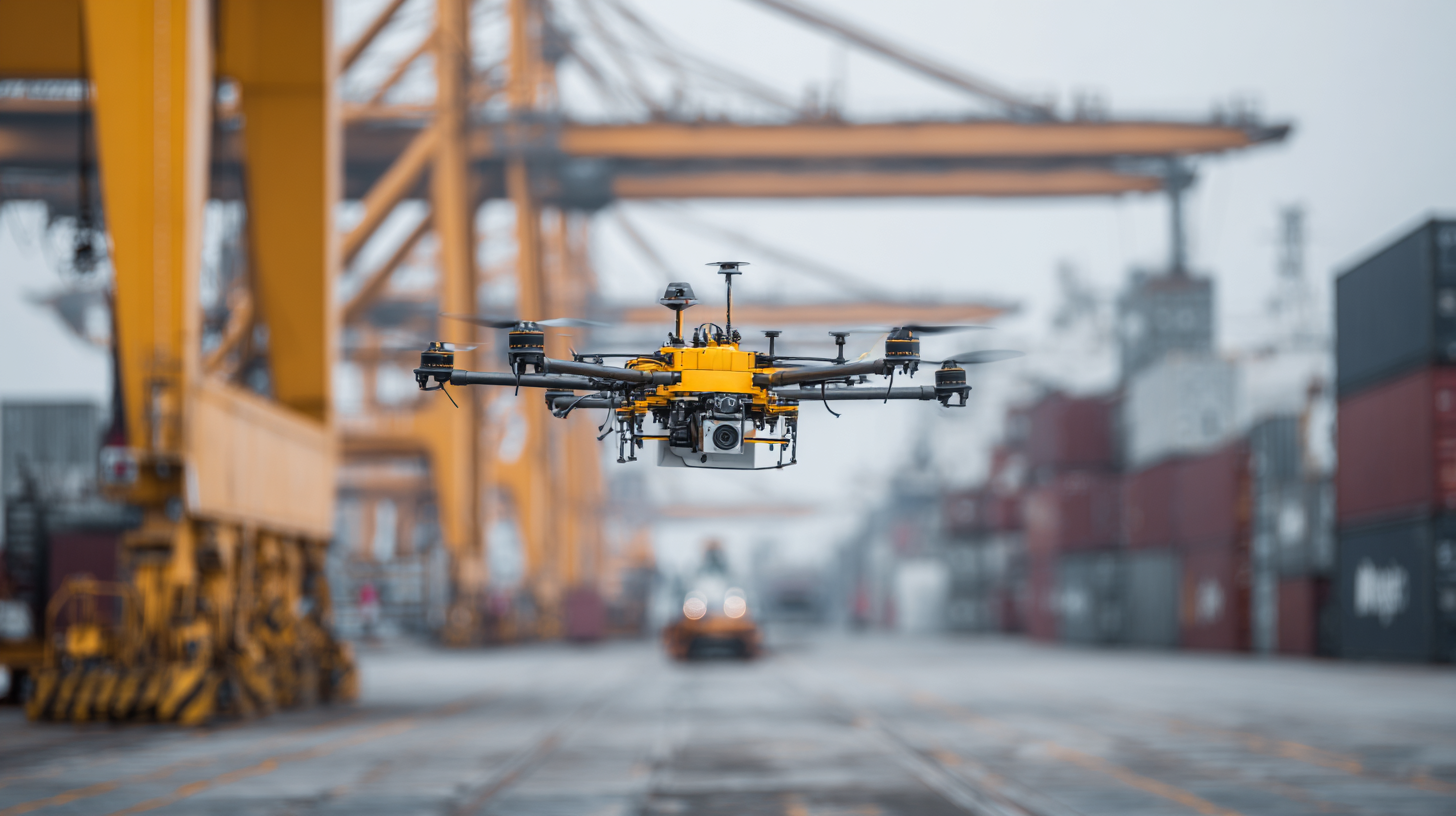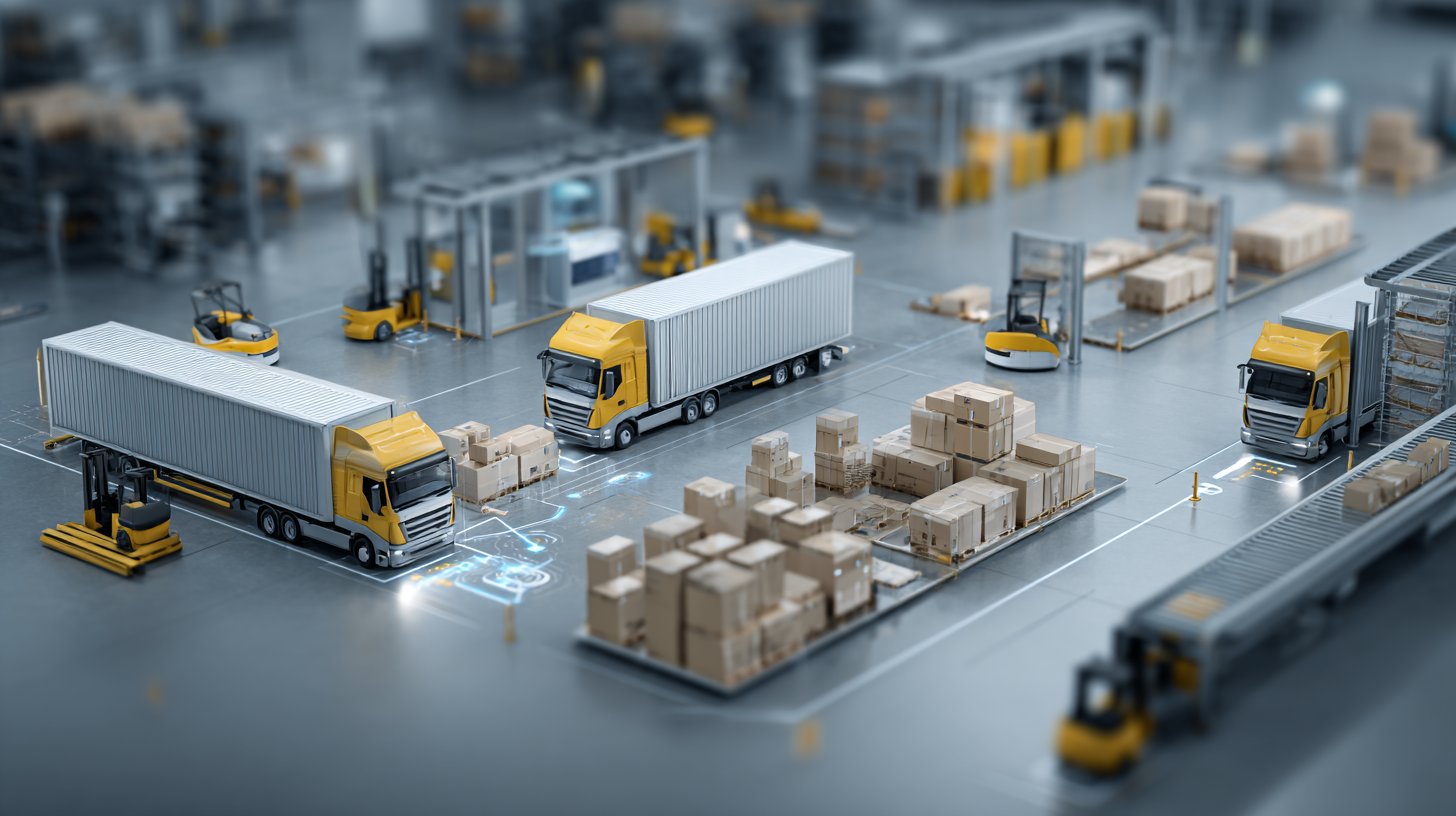A Comprehensive Guide to Transforming Your Business with Autonomous Logistics Solutions
In today's rapidly evolving supply chain landscape, businesses are increasingly turning to autonomous logistics solutions to enhance efficiency and reduce operational costs. According to a recent report by McKinsey, the global market for autonomous supply chain technologies is projected to reach $150 billion by 2027, demonstrating a significant shift towards automation in logistics. This transformative approach not only streamlines processes but also addresses the growing demand for real-time data analysis and improved decision-making. As companies face challenges like labor shortages and rising consumer expectations, the integration of autonomous logistics systems is becoming essential. Utilizing technologies such as AI, robotics, and IoT, businesses are not only optimizing their operations but also paving the way for a more agile and resilient future. Embracing autonomous logistics is no longer a choice but a strategic imperative for businesses looking to thrive in the competitive market.

Understanding Autonomous Logistics: Key Technologies and Trends
Autonomous logistics represents a transformative shift in the transportation industry, driven by key technologies such as LiDAR sensors. These advanced sensors are crucial for the development of autonomous vehicles, as they provide high-resolution, three-dimensional mapping of the environment, enabling vehicles to navigate safely and efficiently. As improvements in LiDAR technology continue to emerge, we can expect enhanced capabilities that will support the expansion of autonomous logistics solutions. This showcases a significant trend in the market, where the integration of sophisticated sensors is essential for achieving autonomy in logistics operations.
Moreover, the evolution of transportation modalities—from land to sea and air—compounds the urgency for innovative logistics strategies. The global race for autonomous trucks is a prime example, with advancements in autonomous driving technology gaining momentum and presenting new opportunities for efficiency in freight transport. As we head towards 2024, the exploration of new technologies, such as generative AI and data analytics, are reshaping supply chains, facilitating smarter decision-making and more streamlined operations. The emphasis on these key technologies and trends positions autonomous logistics at the forefront of modern transportation solutions, promising a future where efficiency and safety converge seamlessly.
Benefits of Implementing Autonomous Solutions in Your Supply Chain
As industries continue to evolve, the implementation of autonomous solutions in supply chains presents numerous benefits that can redefine operational efficiency. With over 85% of Fortune 500 companies leveraging AI solutions, businesses are increasingly recognizing how artificial intelligence and automation can enhance logistics capabilities. In fact, 35% of supply chain executives anticipate that their systems will be predominantly autonomous by 2030, signaling a significant shift towards advanced operational models that require minimal human intervention.
Innovative packaging designs and container management strategies are also becoming pivotal in enhancing the collaborative nature of autonomous supply chains, particularly in the automotive sector. By investing in smart packaging technologies, companies can streamline logistics processes, reduce costs, and improve accuracy in inventory management. The rise of autonomous robots and drones further underscores the trend, with ongoing advancements promising to deliver agile and responsive supply chains that can adapt in real time to changing market conditions. As organizations strive to make their supply chains more resilient, the integration of these technologies will likely become a key competitive advantage.
Challenges and Considerations for Transitioning to Autonomous Logistics
 Transitioning to autonomous logistics solutions presents a range of challenges that businesses must navigate to fully harness their potential. According to a report by McKinsey, companies that implement automation in their logistics processes can achieve a productivity increase of 20% to 30%. However, the integration of autonomous systems often involves significant upfront costs and requires a robust technological infrastructure. Businesses must weigh these initial investments against potential long-term savings and efficiency gains.
Transitioning to autonomous logistics solutions presents a range of challenges that businesses must navigate to fully harness their potential. According to a report by McKinsey, companies that implement automation in their logistics processes can achieve a productivity increase of 20% to 30%. However, the integration of autonomous systems often involves significant upfront costs and requires a robust technological infrastructure. Businesses must weigh these initial investments against potential long-term savings and efficiency gains.
Moreover, workforce considerations play a crucial role in this transition. A study by Gartner indicates that 57% of logistics professionals express concerns about workforce displacement due to automation. As autonomous logistics systems become more prevalent, companies must prioritize upskilling their employees to complement these technologies rather than compete with them. This involves not only training staff to operate new systems but also developing strategies to foster a culture of innovation that encourages adaptability and resilience in the workforce. Addressing these challenges head-on is essential for businesses aiming to leverage autonomous logistics effectively.
Case Studies: Successful Transformations with Autonomous Logistics
In the age of rapid technological advancement, businesses are increasingly turning to autonomous logistics solutions to optimize their operations. The case studies of companies that have successfully implemented these innovative systems reveal their transformative potential. For instance, a leading retail giant integrated autonomous delivery robots into its supply chain, significantly reducing delivery times while minimizing human error. This not only enhanced customer satisfaction but also resulted in substantial cost savings, illustrating the effectiveness of embracing autonomous technology.

Another remarkable example comes from the manufacturing sector, where a factory adopted autonomous guided vehicles (AGVs) for material handling. By automating the transport of materials, the facility achieved higher efficiency and streamlined its workflow. Workers could focus on more complex tasks, while the AGVs ensured that production lines ran smoothly without interruptions. These case studies highlight that the shift towards autonomous logistics is not merely a trend, but a strategic movement that empowers businesses to enhance productivity and adapt to the evolving market demands.
Future Trends: The Evolution of Logistics in a Digital Age
In the rapidly advancing digital age, logistics is undergoing a significant transformation. Autonomous logistics solutions are at the forefront, revolutionizing how businesses manage their supply chains. With technologies like artificial intelligence and the Internet of Things (IoT), companies can now optimize their operations, reduce costs, and enhance customer satisfaction. This evolution not only improves efficiency but also sets the stage for innovative service models that adapt to changing consumer demands.
**Tip 1:** Embrace Automation - Implementing robotics and automated vehicles in your warehouses can drastically speed up the fulfillment process. Consider starting small by automating repetitive tasks, allowing your workforce to focus on more strategic activities.
**Tip 2:** Leverage Data Analytics - Use advanced analytics to gain insights into your logistics operations. Tracking shipment patterns and inventory levels enables you to make informed decisions that reduce waste and enhance agility.
As the landscape of logistics continues to evolve, businesses must remain adaptable and open to technological advancements. The integration of autonomous solutions will not only pave the way for operational efficiency but also prepare organizations for the future demands of a digitally driven marketplace.
A Comprehensive Guide to Transforming Your Business with Autonomous Logistics Solutions
Related Posts
-

The Future of Robotics Automation Transforming Industries with Data Driven Innovations
-

How to Enhance Your Business Efficiency with Think Robotics Solutions
-

Maximizing Efficiency with Logistics Robotics A Comprehensive How to Guide
-

Challenges Faced by Industries Embracing Robotics and Automation
-

5 Best Innovations in Think Robotics for the Future of Automation
-

5 Best Innovations in Robotics Automation Transforming Industries